01 Canine Thyroid Disease
1/55
Earn XP
Description and Tags
• Brief overview of endocrinology • Brief overview of physiology and anatomy • Acquired hypothyroidism • Disease definition , presentation, clinical signs, differential diagnoses, aetiology/pathophysiology, disease testing, disease treatment • Congenital hypothyroidism • Canine thyroid neoplasia
Name | Mastery | Learn | Test | Matching | Spaced |
|---|
No study sessions yet.
56 Terms
Excess production (hyper…): is usually 2
tumour of the gland
hyperstimulation of the gland.
Decreased production (hypo…) is usually 3
autoimmune destruction
injury to the gland
hypostimulation of the gland.
Hormone resistance is caused by
defect in the target tissue—> not responding normally
Other causes of endocrine disease
not hyper, hypo or hormone resistance
defecting synthesis
changes in hormone transport
cysts
tumour ± hormone effects
hormone produced in largest amount by thyroid gland (95-99% of production)
what comes second
Thyroxine (T4)
then T3 (and rT3)
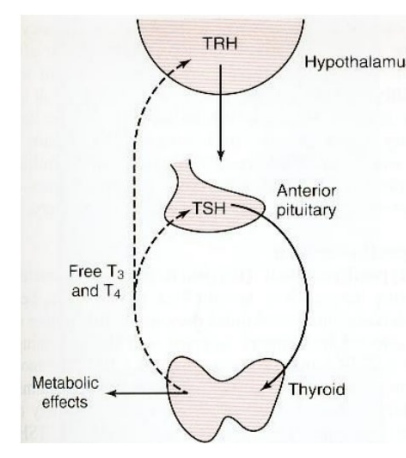
T4 controlled by
TSH
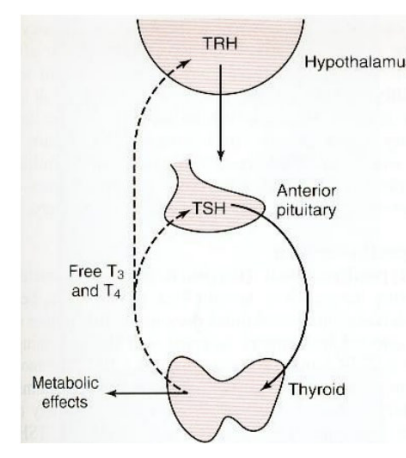
T4 production is controlled by TSH.
this is regulated by
TRH
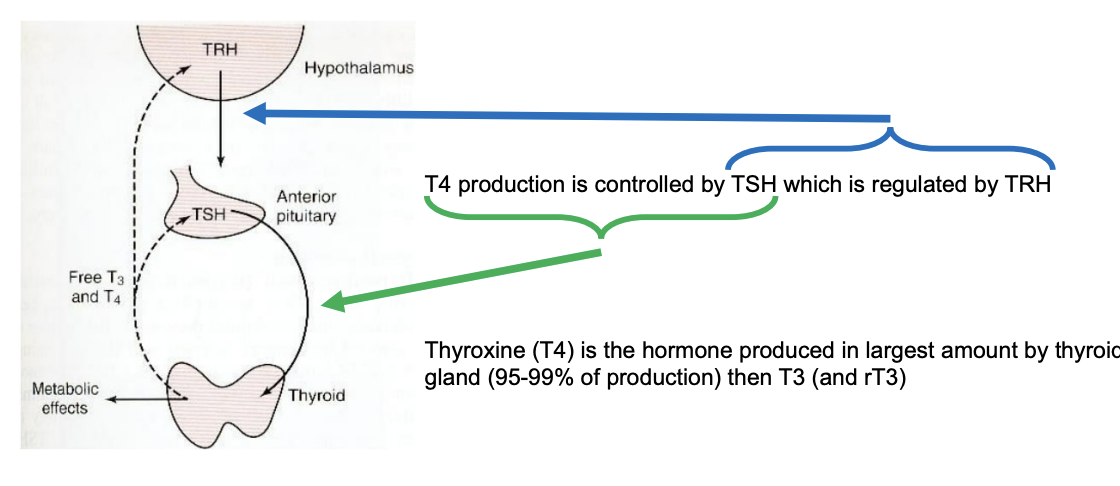
Thyroid hormones is formed by
iodines
4- T3
3- T3
major active Thyroid hormone
T3
T4—>T3 in vitro
T4 in the blood 1
difference between dog and cat 2
99% is protein bound
albumin in cats
albumin and Thyroboundinn in dogs
Protein bound T4 acts as
reservoir
maintain steady state concentration of free T4
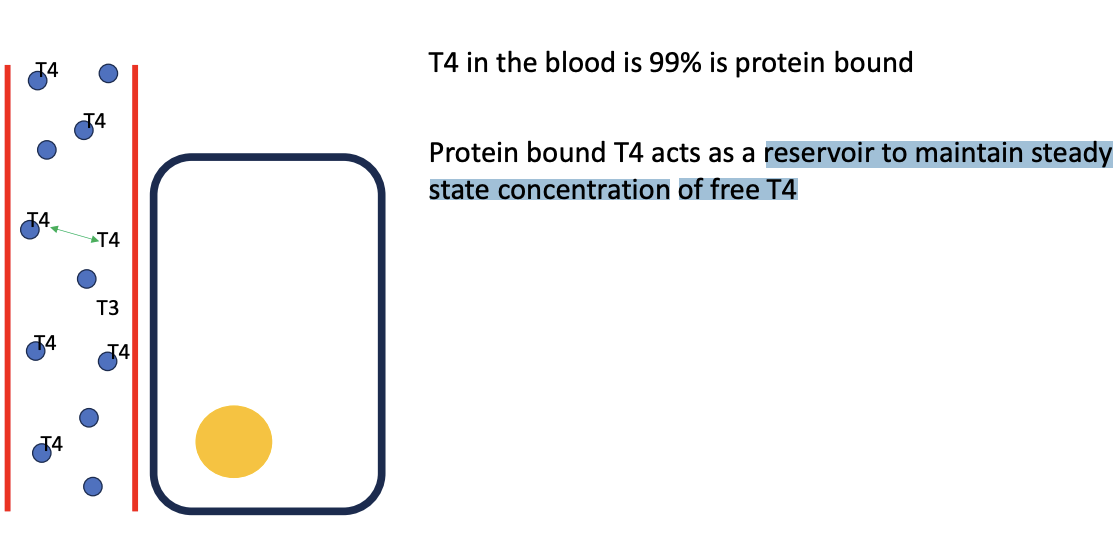
Unbound Thyroid hormones are biologically
can they enter cells?
active, capable of entering cells
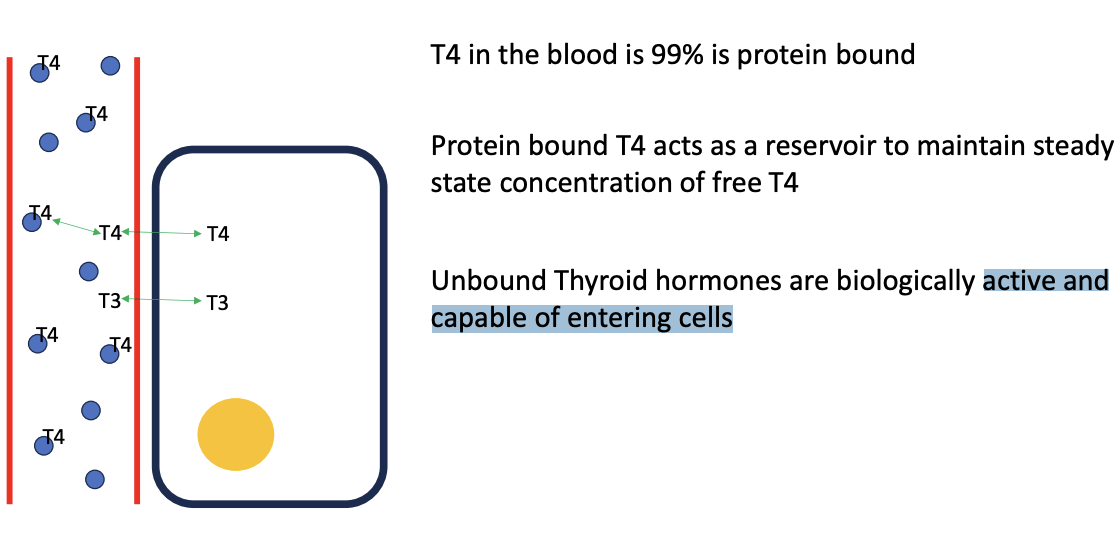
Only 20% of T3 is produced by
majority of T3 is derived from
thyroid gland.
extrathyroidal enzymatic deiodination of T4.
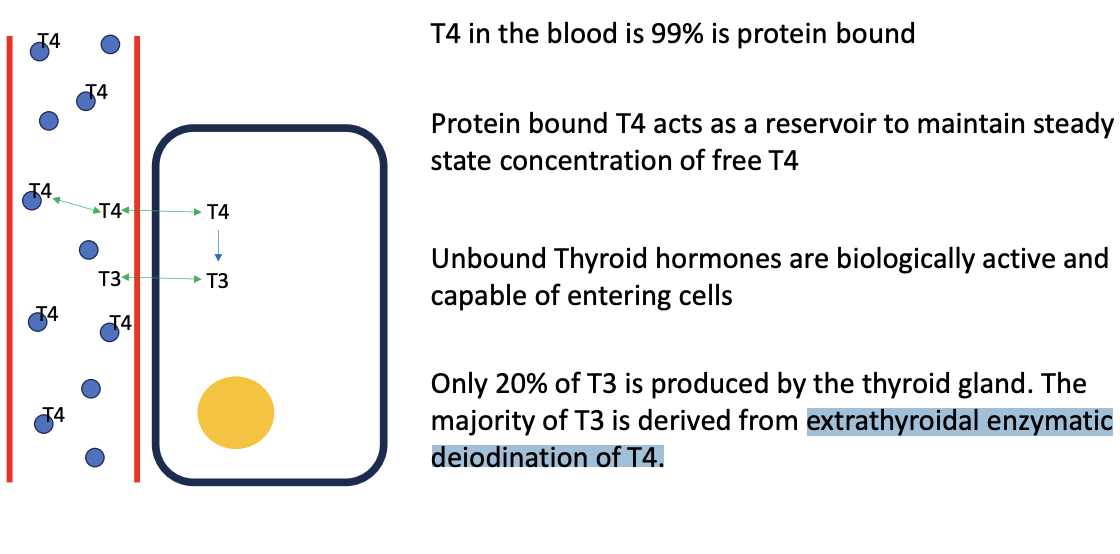
Hypothyroidism in dogs can be
difference between them is
Acquired (common) or congenital (rare)
time of onset
aquired old, congenital young dog
Site of pathology: hypothyroidism can be
primary, secondary, tertiary
Site of pathology: primary, secondary and tertiary hypothyroidism 3
most common is 1
Primary – thyroid pathology (common) Secondary – pituitary pathology (very rare) Tertiary – hypothalamus pathology
most common forms of hypothyroidism:
time of onset
site of pathology
Acquired (common)
Primary – thyroid pathology (common
Aetiology/pathophysiology of Primary acquired hypothyroidism 3
which one most common
Lymphocytic thyroiditis (autoimmune) (common)
Idiopathic follicular atrophy (possible end-stage of above)
Neoplasia (very rare)
Congenital hypothyroidism can be 2
primary or secondary
Primary Acquired Hypothyroidism:
signalment— age
Age: middle age to older dogs (6 – 10 y)
Primary Acquired Hypothyroidism:
signalment—breed
Increased risk in
Boxers,
Dobermann pinscher,
Border terrier
Decreased risk:
Frenchies
Yorkies
pugs
Primary Acquired Hypothyroidism:
signalment— Sex/neuter status
Neutered dogs reported increased odds
aq pri hypothyroisdiusm History and Clinical signs Two main categories
Metabolic: Dermatological:
main categories of clinical presenation: canine hypothyroidism 2
metabolic and dermatological
Metabolic clinical presentation of canine hypothyroidism 3
name one thing that WILL NOT be seen in normal caine hypothyroid
Lethargy
Weight gain
Exercise intolerance
NOT PU/PD
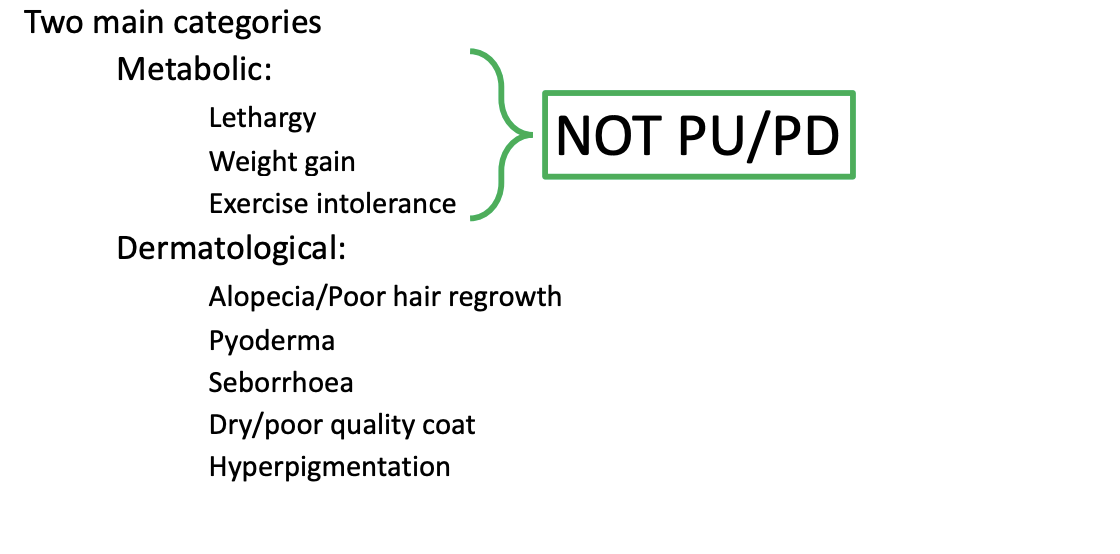
Dermatological cliincal presentatino: canine aquired hypothyroidism 5
describe alopecia pattern 4
Alopecia/Poor hair regrowth
bilateral, symmetrical, flank, non-puritic
Pyoderma
Seborrhoea
Dry/poor quality coat
Hyperpigmentation
Other (uncommon) clinical signs of canine aquired primary hypothyroidism 6
Diarrhoea
Irregular oestrus
Facial nerve paralysis
Megaoesophagus
Vestibular disease
Laryngeal paralysis
Lipid corneal dystrophy
pattern of alopecia in hypothyroidism
Classically bilateral, symmetric, non pruritic flank alopecia
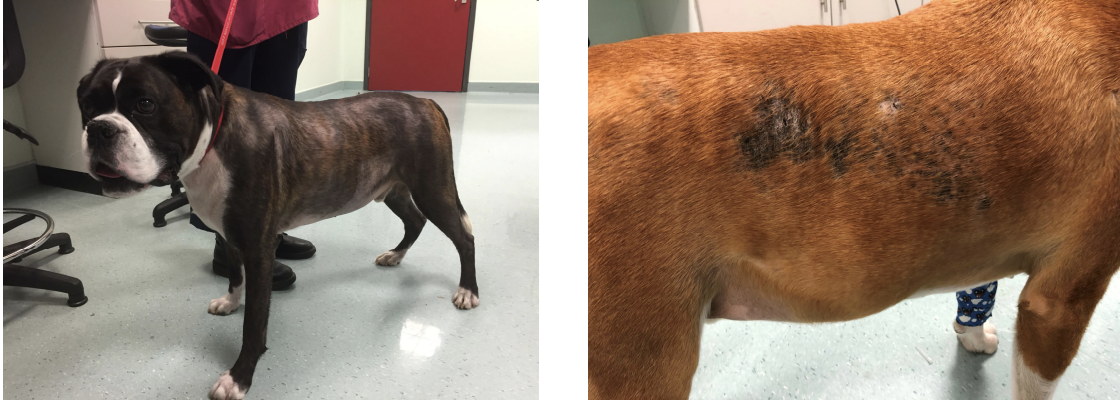
Haematology 1, Biochemistry 4 and Urinalysis 1 reuslts : primary hypothydoisim
what is the MOST IMPORTANT?
Non‐specific changes on haematology:
Mild non‐regenerative anaemia
Serum biochemistry
Increased lipids – triglycerides and cholesterol
Mild increases in ALP, ALT, CK
Urinalysis unremarkable
Ddx hyperlipidaemia 4
Postprandial hyperlipidaemia (post feed)
starve minimum 14 hr (?)
Secondary hyperlipidaemia
Primary hyperlipidaemia: breed related
breed with congenital 1ry hyperlipidaemia 3
Mini Schnauzer
Beagle,
Shetland sheepdog
Secondary hyperlipidaemia ddx 7
Hypothyroidism
Hyperadrenocorticism
Diabetes mellitus
Pancreatitis
Cholestasis
Hepatic insufficiency
Protein ‐losing enteropathy
Range of specific endocrine tests available to assess the thyroid axis 5
Total T4 (TT4)
Thyroid stimulating hormone (TSH)
free T4 (fT4)
Total T3 (TT3)
Thyroglobulin autoantibodies (TgAA): indicate IM-thyroditis
most important first line test to assess the thyroid axis 2
Total T4 (TT4)
Thyroid stimulating hormone (TSH)
Specific Disease Testing – TT4 Very good for
initial screen for hypothyroidism in patients with compatible clinical signs
Specific Disease Testing – TT4
If normal
name 2 consideration/ situation when interperating normal T4 odd situations! (2)
normal—> hypothyroidism is effectively ruled out
consider when interperate:
false negative: elevated in dogs with anti‐T4 antibodies (—> test free‐T4)
Sighthounds have lower TT4 ‐-> consider breed specific ranges
Specific Disease Testing – TT4
If low, then indicates 1
false positive can be caused by
may be hypothyroidism or
(false +ve) sick‐euthyroid or drugs
TMPs, glucocorticoid, phenobarbital
Drug effects on Thyroid testing: Trimethoprim‐sulfonamides 2
when show? will this improve?2
Trimethoprim‐sulfonamides disturb thyroid function
T4 below and TSH above reference ranges after 4 weeks
normal after 14 days
Drug effects on Thyroid testing: Phenobarbitone
alter T4 and TSH concentrations
T4 significantly decreased
TSH significantly increased
Drug effects on Thyroid testing: glucocorticoid
decrease T4 with normal TSH
What is sick euthyroid? 3
what is the test result for sick euthyroid
In response to almost any systemic illness, surgery or trauma, stress
decreases TSH —> decrease release of TT4
Physiologic adaptation: decreases cellular metabolism T4, increase TT4—>T3
—> Low TT4 and normal TSH
T4 value in sick euthyroid: severity of decrease depends on
more severe diseas, lower the T4 value
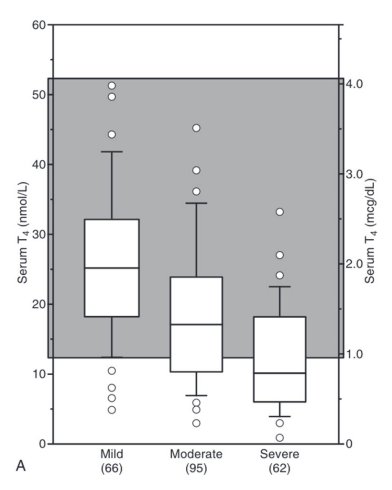
TSH value in sick euthyroid
decreased in most but some can be the same
So not 100% definitive
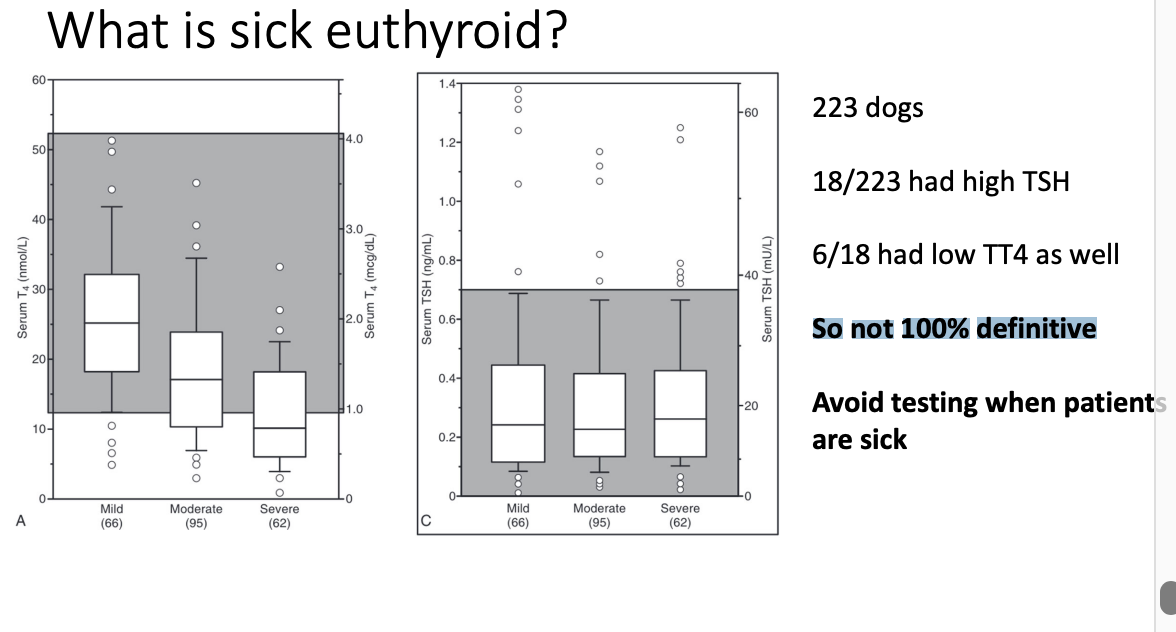
Avoid testing for thyroid when
patients are sick—sick euthyroid syndrome
Specific Disease Testing – TSH
expected value 1
what do you interperate this with? 1
interperate alone?
expect to be high but sometimes normal in dog hypothyroidism
Elevated in little euthyroid dogs
—> Useful when interpreted with TT4 or FT4
Low TT4 with increased TSH is highly supportive of
hypothyroidism in a dog with appropriate clinical signs
Specific Disease Testing – TgAA
is TgA common?
what disease is it linked to
is it commonly used?
50% of hypothyroid dogs TgAA +ve
found in dogs with lymphocytic thyroiditis
20% dogs with TgAA +, normal free T4 and TSH developed low free T4 and/or elevated TSH after 12 months
not generallly used
hypothyroidism: Treatment approach
Replace the missing hormone
hypothyroidism: Treatment of choice
how to assese response 2
when and what to measure: blood and clinical sign 4
Levothyroxine PO q12/24
Assess response by clinical signs and TT4 concentrations
Measure TT4: 4 – 8 weeks after starting medication
Lethargy improve 4 – 6 hours after giving medication in the morning
hypothyroidism: Treatment of clinical sign: when do they imporve?
Lethargy usually improves quickly
Cholesterol and triglycerides can take weeks
Dermatological changes can take months
Anaemia slowly resolves as well
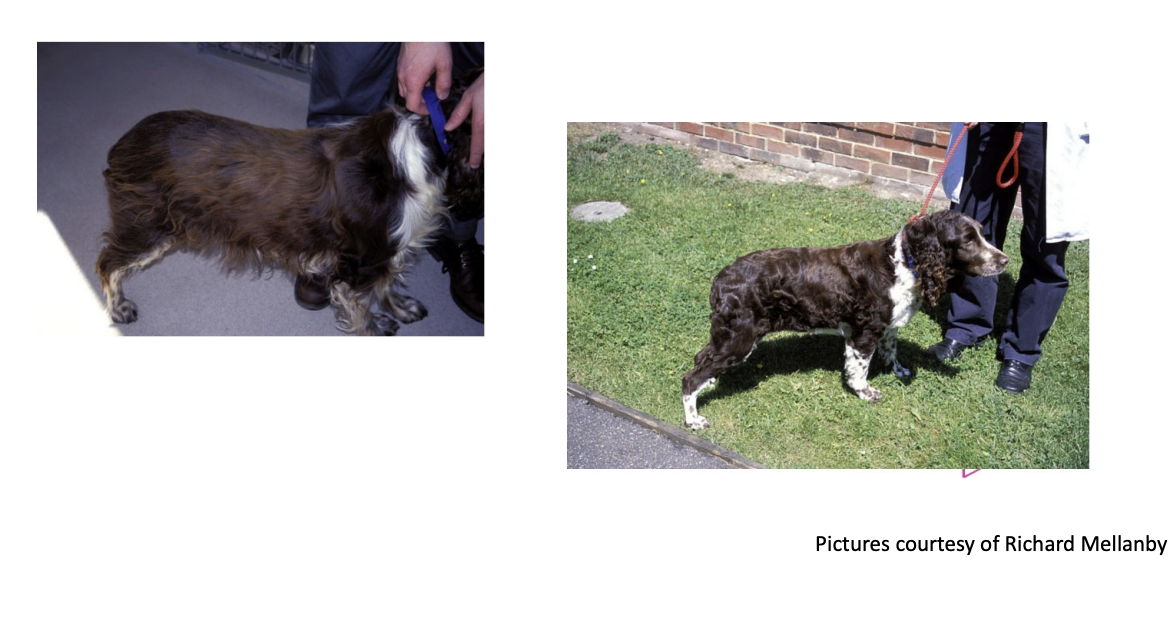
types of congenital canine hypothyroidism
primary and secondary congenital
Congenital hypothyroidism
common clinical presentation 3
Puppies: normal at birth and then fail to thrive or gain weight. ± dull or lethargic
Develop disproportionation dwarfism
large and broad heads, protruding tongues, square trunks and short limbs
Persistence of puppy haircoat or alopecia
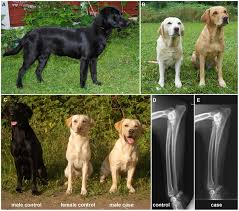
Thyroid neoplasia in dogs are 3
uncommon in dogs
usually non‐functional
Most are carcinomas.
Thyroid neoplasia Typically present due to 1
it may be 1
mass in the thyroid region
may be compressing local tissues
Thyroid neoplasia: best option for localised lesions
Surgery
Thyroid neoplasia: helpful palliative options in some cases with metastatic disease
chemotherapy +/‐radiotherapy